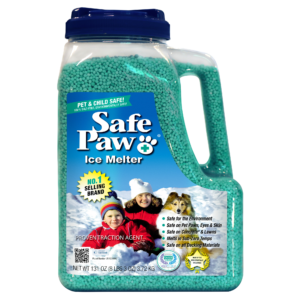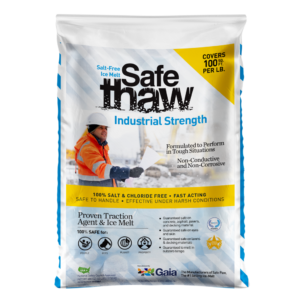Use This To Protect Your New Concrete From Salt Damage

There is a lot of salt poured on roads and driveways during snow periods. Salts are highly corrosive for your new concrete. Cracked concrete also means you’ll have to spend more money repairing or replacing it next spring. Concrete absorbs water in the same way as a tough sponge does.
You get saltwater slush when you mix rock salt with ice and snow. The concrete will absorb the water as the slush melts. Salt draws water, whereas concrete absorbs it. As a result of the saltwater soaking into the concrete, the concrete will hold more water and become saturated.
Your concrete will deteriorate, and the surface will probably spall—peel, flake, or burst out. Because it is still saturated with water, freshly poured concrete is the most vulnerable to this type of damage. If we are not using any chemicals, how can we avoid slipping while walking on snow and ice? The traction agent comes at the top while looking for walking on ice safety tips.
How To Protect Your New Concrete From Salt?
- Calcium Magnesium Acetate (CMA)
Calcium Magnesium Acetate is an alternative. However, it isn’t without flaws. It can deoxygenate the rivers into which it is washed, which can be hazardous to aquatic life. It is more expensive than other ice melters.
- Walk On Ice
With a solution that is 100 percent natural and safe for pets, people, and your property, you can stay safe on slick surfaces. Walk On Ice is an instant traction agent that can be used safely on sidewalks, steps, or car traction. Unlike salt-based ice melts, it will not harm your concrete and is non-corrosive.
- Kitty Litter/Sand
Spreading sand or cat litter can be beneficial if you want to make your walkways safer to walk on. It gets dirty and can clog gutters and sewers. Sand and kitty litter do not melt ice.
- Beet Juice/Brine
It works as an ice melter. However, most households will not consume enough beets to make home production viable. But it gives a messy strain to your concrete.
If you use this brine on your concrete, keep in mind that it contains salt. Other brines, such as cheese brine and pickle juice, can be used in the same way, although they frequently require larger quantities than the average home has on hand.
- Ground Coffee
If you own a coffee business, this may be the most excellent option, but wasted coffee grounds can assist you in gaining traction on slick pavement. It will primarily provide friction between your footwear and the ice, similar to sand. There isn’t enough coffee consumed in most households to create a bag for every snowfall.
- Heated Mats
Heat is a surefire way to keep warm while it’s freezing outside. One option to keep places like your front step free of ice is to plug-in a heated snow melting mat. However, it will undoubtedly increase your energy bill.
Conclusion
There are numerous disadvantages to using rock salt. It can rust, pollute the environment, destroy concrete, and degrade your lawn and landscape. There is a product to alleviate these issues. Using a natural traction agent, you can avoid any slip and fall incidents without damaging your new concrete. That is why walking on ice safety tips mention the usefulness of this traction agent.
Get ready for winter with Walk On Ice instant traction on snow and ice
Other Ice Melt Products
Safe Paw
The Original and the #1 Pet and Child Safe Ice Melt for over 20 years. Guaranteed environmentally safe – will not harm waterways and sensitive wetlands. Safe Paw can change how winter affects our planet.

Safe Thaw
Imagine an ice melt you can put down and never worry about. It won’t harm pets, kids and your property. That’s Safe Thaw. Unlike anything else on the market, Safe Thaw can change how winter affects our planet.



